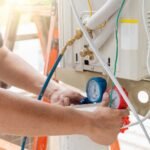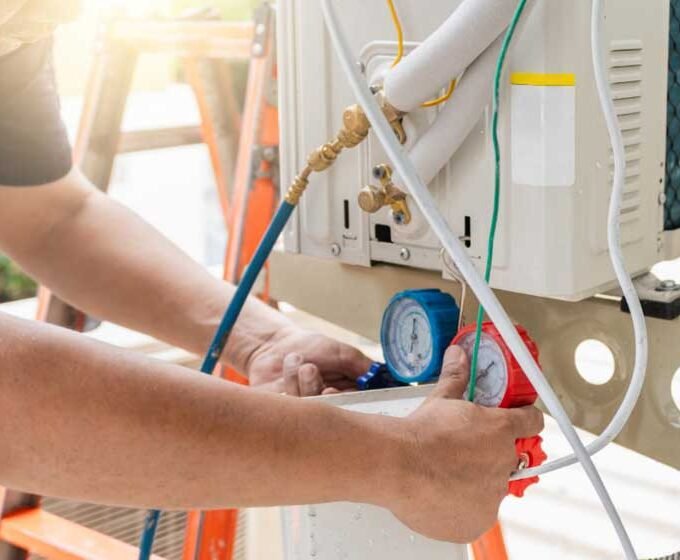Security cameras help minimize crime by raising awareness, capturing activity, and enabling а prompt response to protect people and property. Clear images, regular coverage, and fast notifications reduce the chances of harm and ensure that small issues do not turn into big ones. Visible hardware, simple signs, and clean lighting set expectations that encourage careful behavior in shared spaces. Easy controls and safe storage build trust while systems operate quietly in the background, which keeps neighborhoods and workplaces organized, predictable, and comfortable. They give а sense of safety to everyone around.
Monitoring, Alerts, and Rapid Response
Deterrence improves when cameras support organized monitoring that raises alerts during unusual movements and guides quick action. Schedules, zones, and simple rules focus attention where it matters, which limits noise from routine activity that does not require review. Operators receive notifications with context, time stamps, and live views that show current conditions, so the next step remains clear and timely. Teams respond faster when layouts stay simple, contacts stay current, and responsibilities appear in one dashboard. Recorded alerts also guide improvement because tracked events reveal patterns that shape staffing, lighting, and patrol plans. People learn that problems bring prompt attention and reliable documentation, which discourages repeat behavior over time. Linking cameras with access control tightens coverage by pairing doors and gates with visual checks that confirm identity and path. This structure makes risky actions harder and more visible, which reduces attempts and strengthens everyday order across sites.
Integration, Maintenance, and Reliability
Cameras work best when linked with lights, alarms, and access control to ensure reliable signals and responses. Linked alerts can trigger spotlights, chimes, or locked entries that interrupt suspicious movement and draw attention to the right place. Mobile access ensures supervisors check feeds quickly, while role-based permissions protect privacy without blocking essential views. Health dashboards track uptime, firmware, and storage status, which reduces silent failures and keeps service predictable. Consistent maintenance preserves credibility by preventing blurry images, loose mounts, and outdated settings that erode trust. Clean lenses, secure cables, and documented inspections keep footage usable and discourage behavior that depends on weak tools. Battery backups and cellular links hold coverage during outages and storms, which discourages attempts that rely on darkness or network drops. Clear upgrades, audits, and training processes keep systems active throughout the year.
Visible Presence and Perceived Risk
Visible cameras influence choices because clear sightlines, steady lighting, and known recording make unsafe actions feel costly and unwise. Housings that look maintained, lenses that stay clean, and angles that cover doors, paths, and parking keep attention high in the right places. Deterrence grows when equipment appears active and cared for, since broken mounts and blocked views invite testing and shortcuts. Simple maintenance, such as wiping lenses, checking aim, and tightening brackets, protects image quality and preserves credibility day after day. Public awareness also shapes behavior because signs, notifications, and polite reminders explain that monitoring supports safety and fairness. Clear messages reduce confusion, prevent arguments, and encourage respectful conduct from visitors, workers, and residents across hours. Good lighting supports the lens and prevents shadows that hide faces or plates, while balanced brightness avoids glare that washes detail away. Together, these elements lower guesswork, increase accountability, and encourage calm routines without pressure or confrontation in shared areas.
Community Presence and Daily Routine
Cameras support orderly behavior by encouraging tidy habits in shared spaces, which lowers vandalism, litter, and minor damage that could escalate into larger problems. Consistent monitoring at entrances, loading zones, and storage rooms promotes careful conduct that protects equipment and reduces cleanup. Clear coverage of bike racks, mail rooms, and waste areas helps managers maintain safe and efficient surroundings during busy hours. Posted contacts for assistance simplify help and reduce frustration, fostering cooperation and faster resolutions. Neighborhoods and business districts benefit when coverage spans multiple properties with aligned standards and coordinated management. Agreements on hours, angles, and privacy zones ensure efforts remain respectful and useful for residents, customers, and staff. Local associations and vendors organize maintenance and reporting, while regional partners support consistent service and timely replacement of parts. For instance, providers of commercial security systems in Oregon offer coordinated monitoring, timely repairs, and consistent upgrades to maintain safety standards across locations. Shared procedures familiarize staff and residents, reduce misunderstandings, and strengthen trust in community safety.
Evidence, Identification, and Follow-Through
High-quality recordings discourage crime because clear evidence supports fast identification and fair outcomes that close cases. Consistent frame rates, steady focus, and accurate time codes produce clips that hold up during reviews and claims without confusion. Organized storage, safe retention settings, and quick retrieval keep key moments ready for those who need them. Secure exports and verified sharing protect files and reduce tampering concerns that slow progress and weaken trust. Evidence also improves prevention because completed cases teach what worked and what deserves change, which leads to smarter layouts and stronger settings. Patterns in hours and locations highlight weak spots that benefit from lighting, signage, or staffing adjustments. Community updates share general lessons without exposing private details, which preserves goodwill and clarity. Regular audits verify camera health, storage integrity, and privacy controls, which keep reliability high and discourage behavior that depends on gaps.
Conclusion
Security cameras reduce crime by increasing visibility, modifying behavior, and allowing for prompt, equitable response when concerns emerge. Strong images, dependable alarms, and structured data make risky actions more difficult, less tempting, and easier to address effectively. Respectful privacy tools, clear communication, and steady maintenance keep trust high while coverage remains active without confusion. Balanced systems that integrate detection, lighting, access, and monitoring deliver steady safety gains in homes and workplaces and keep daily life calm. Reliable planning matters.
















